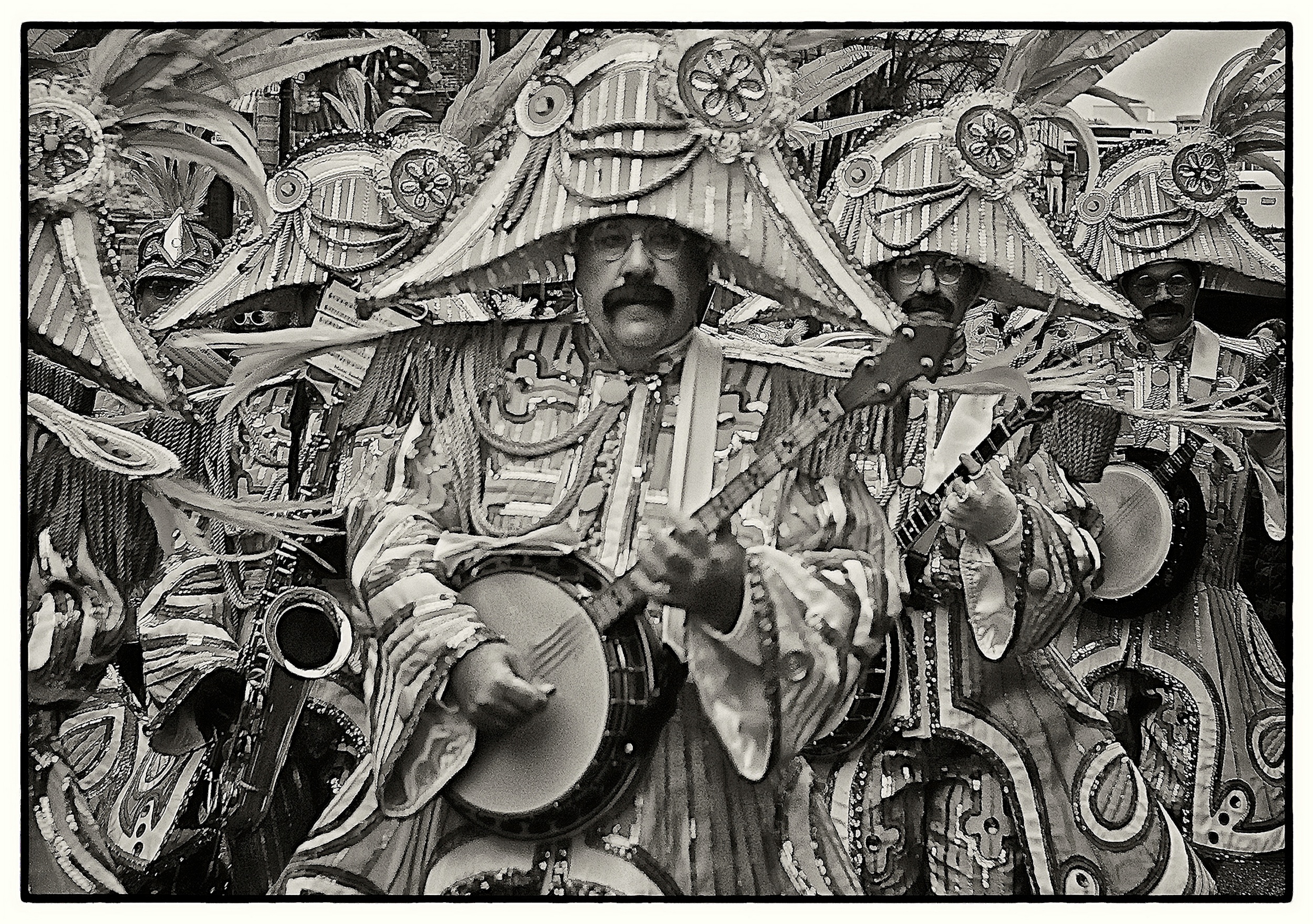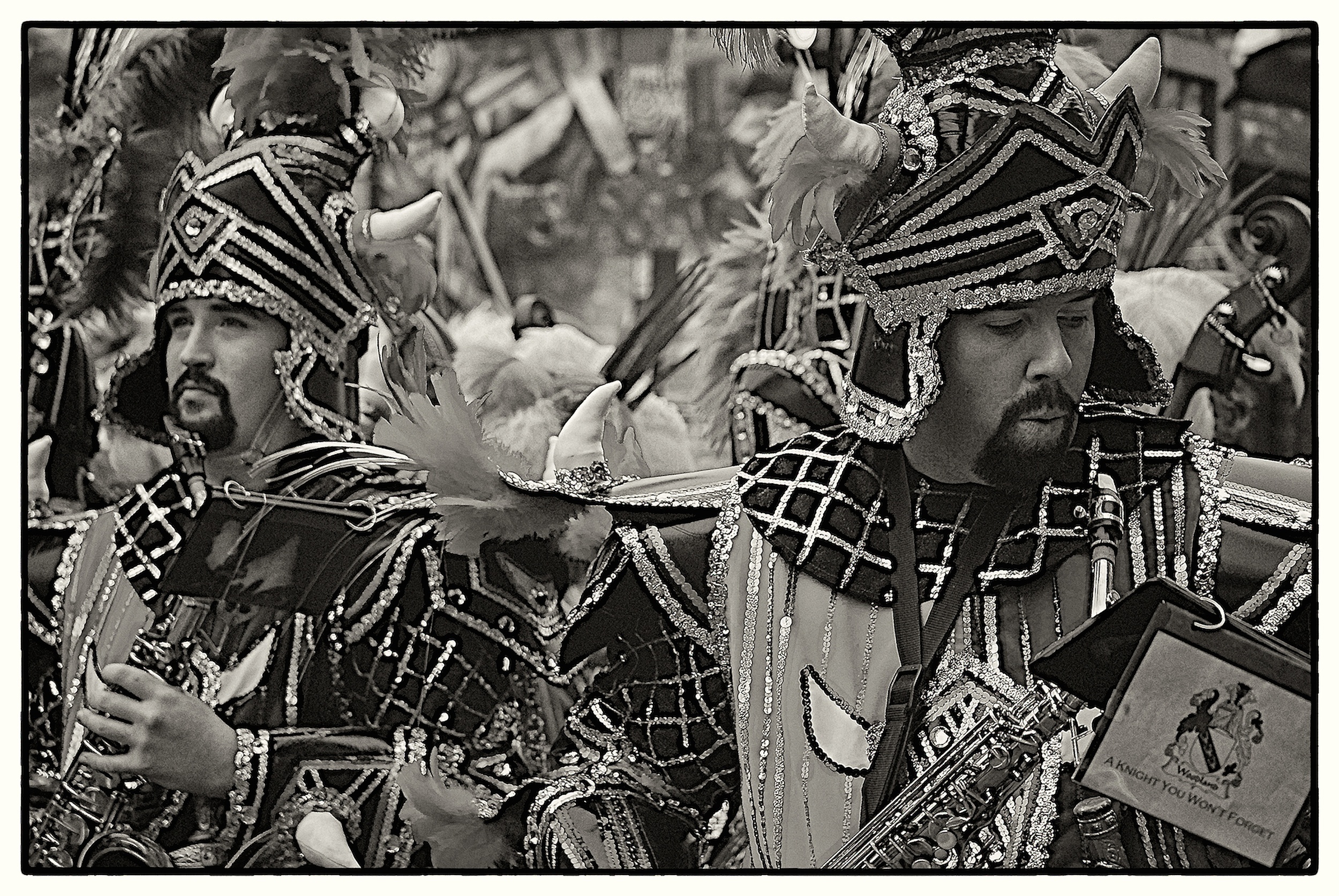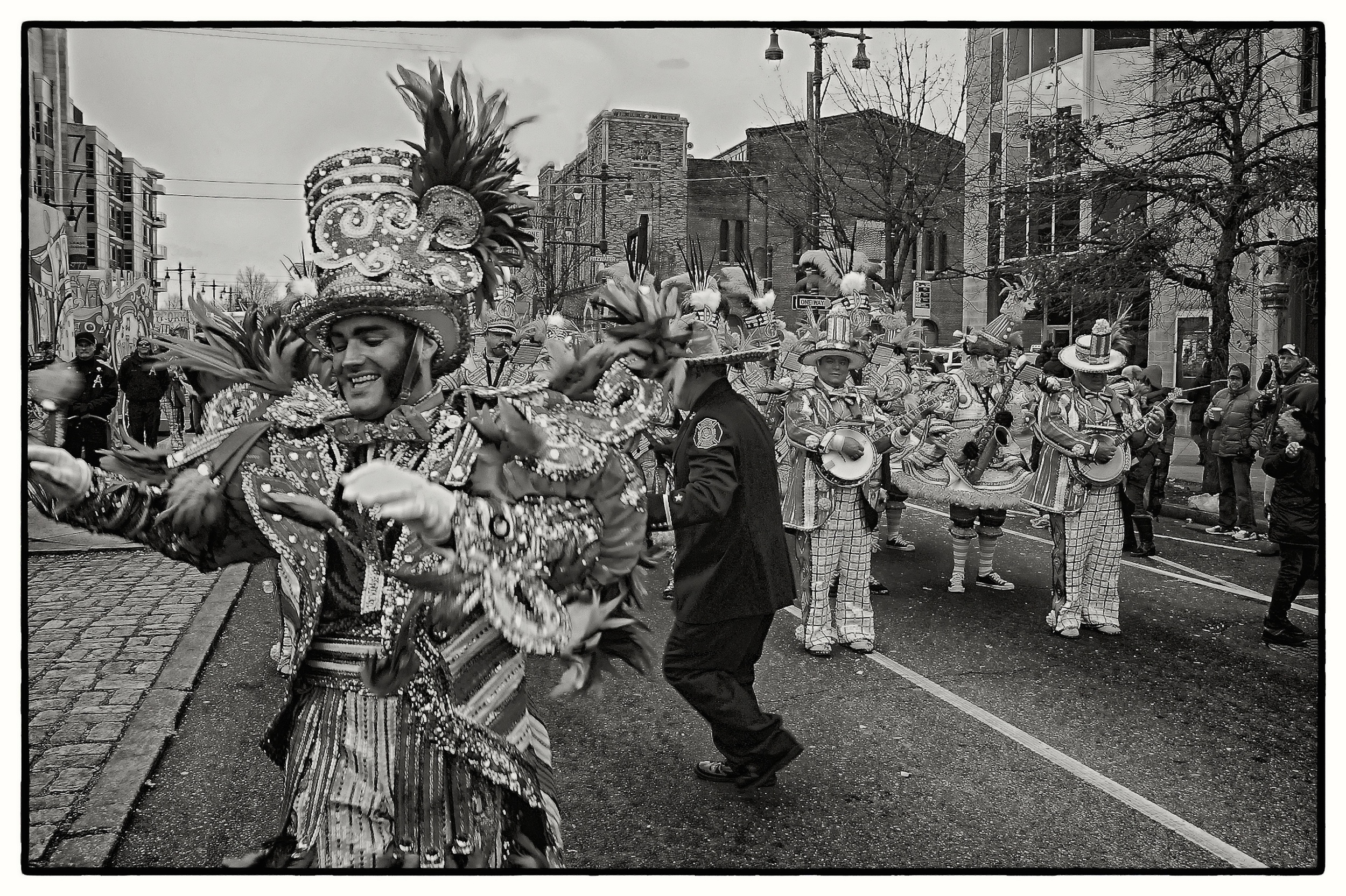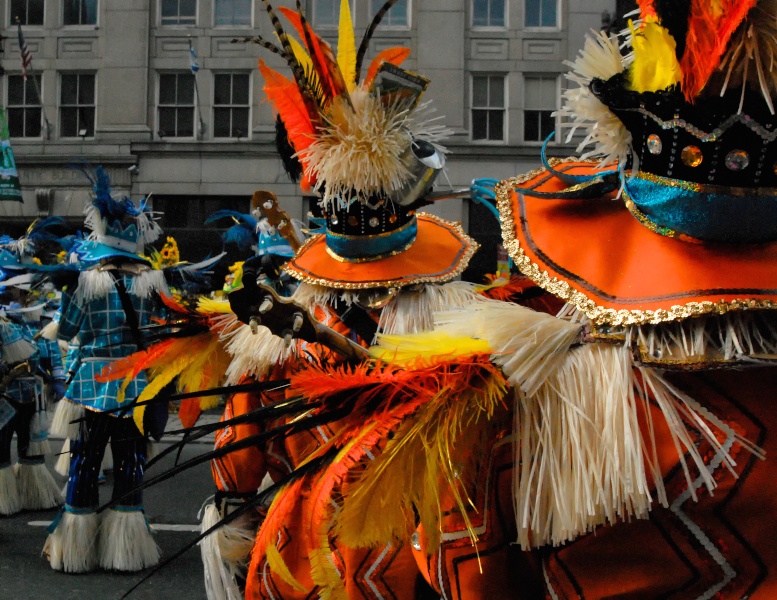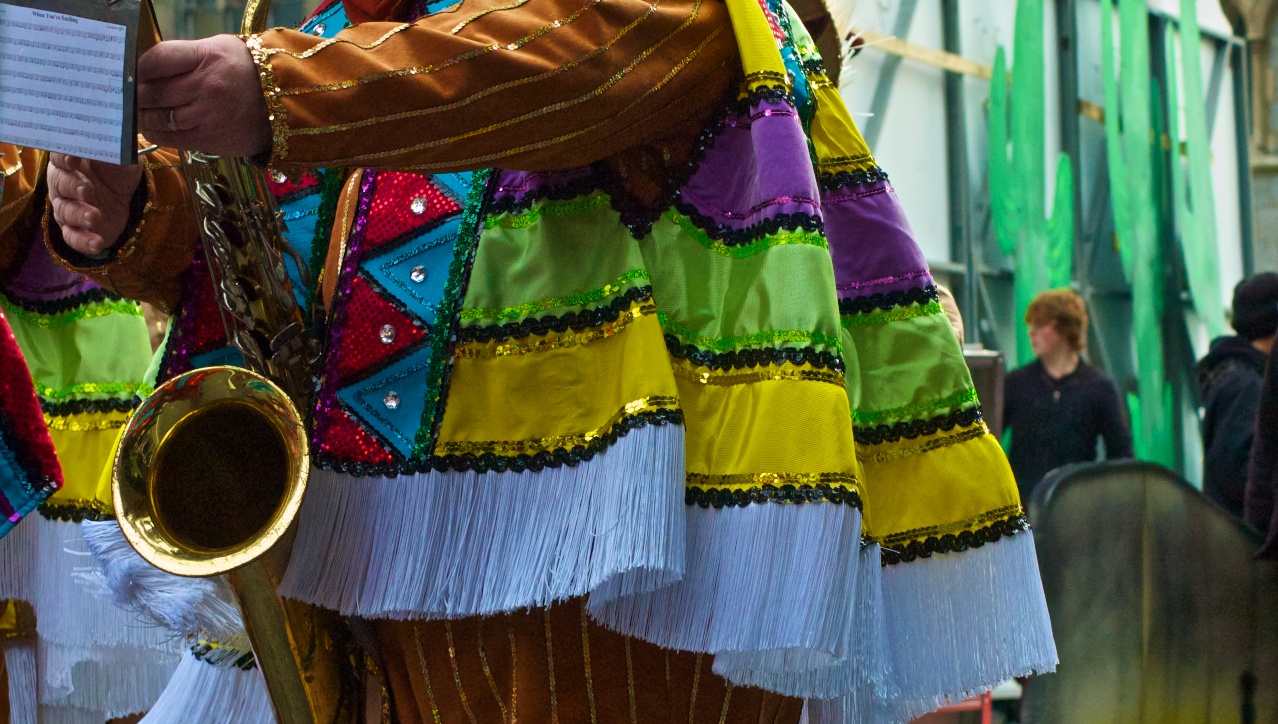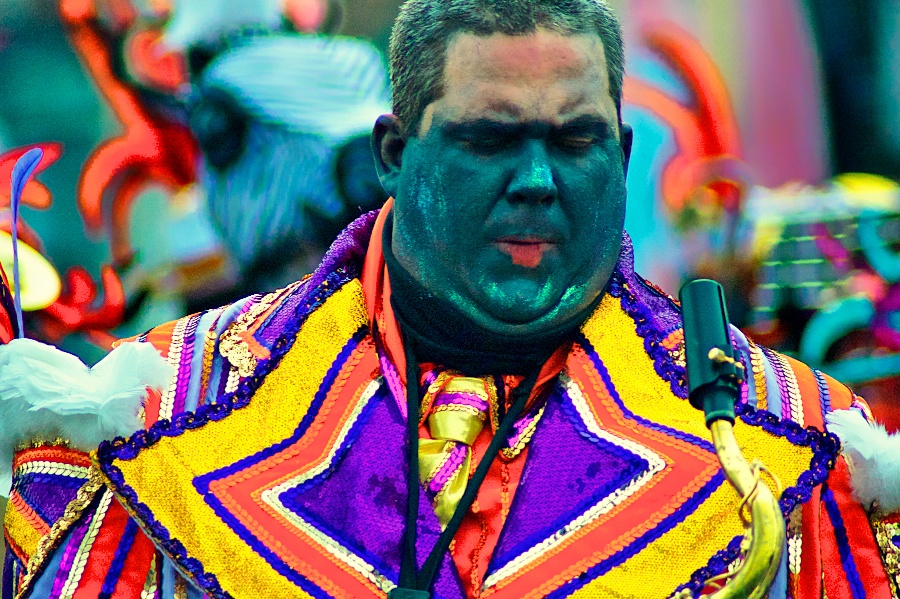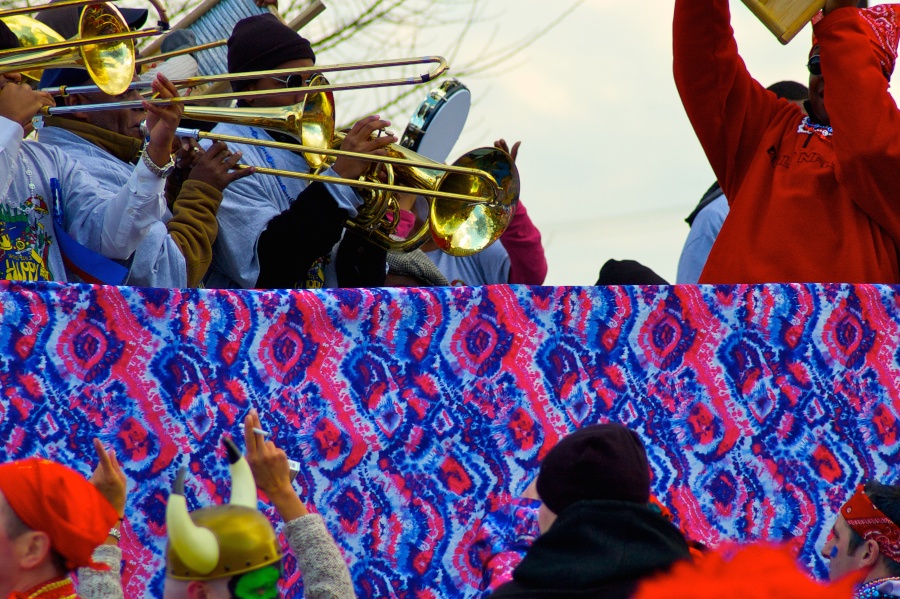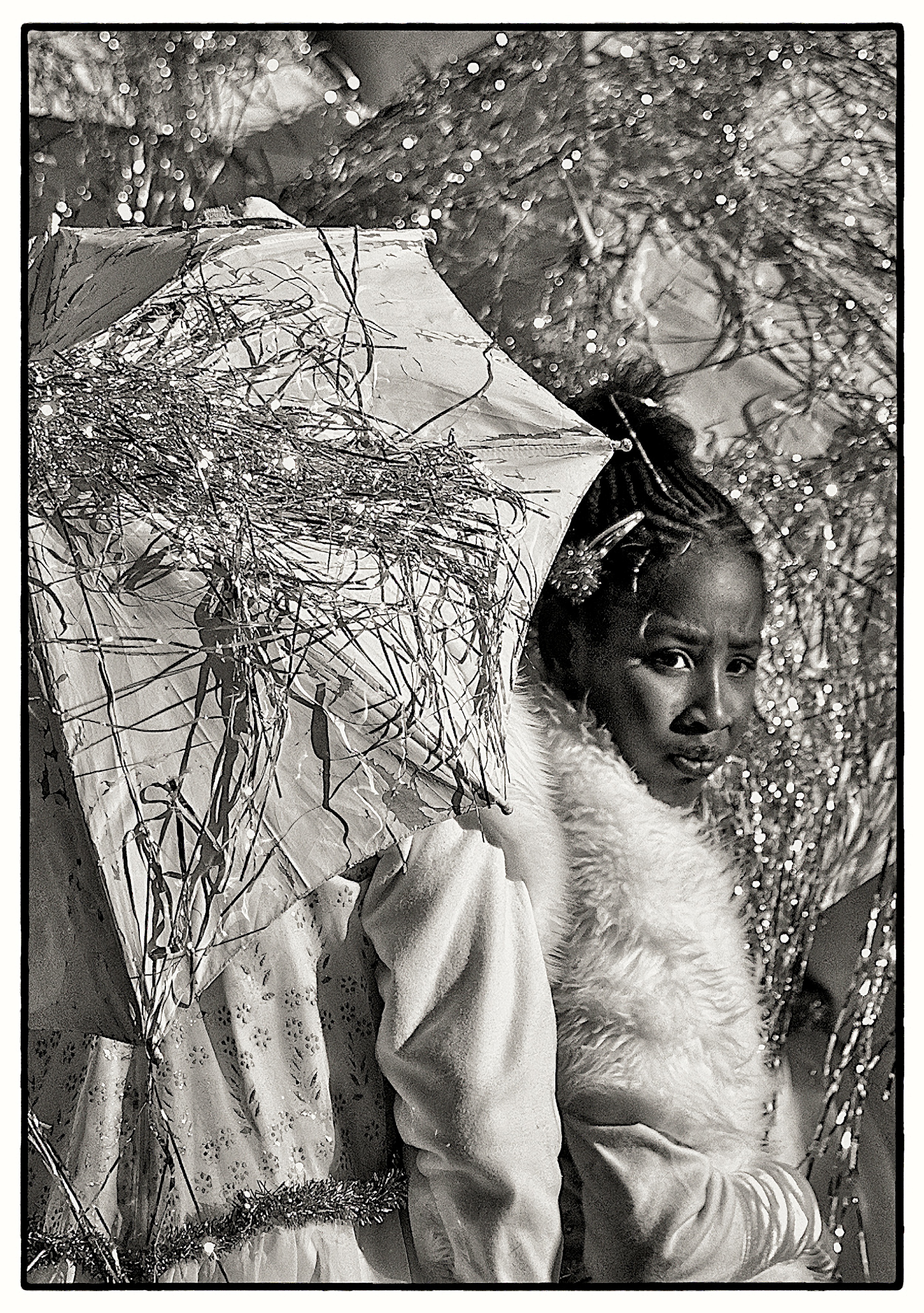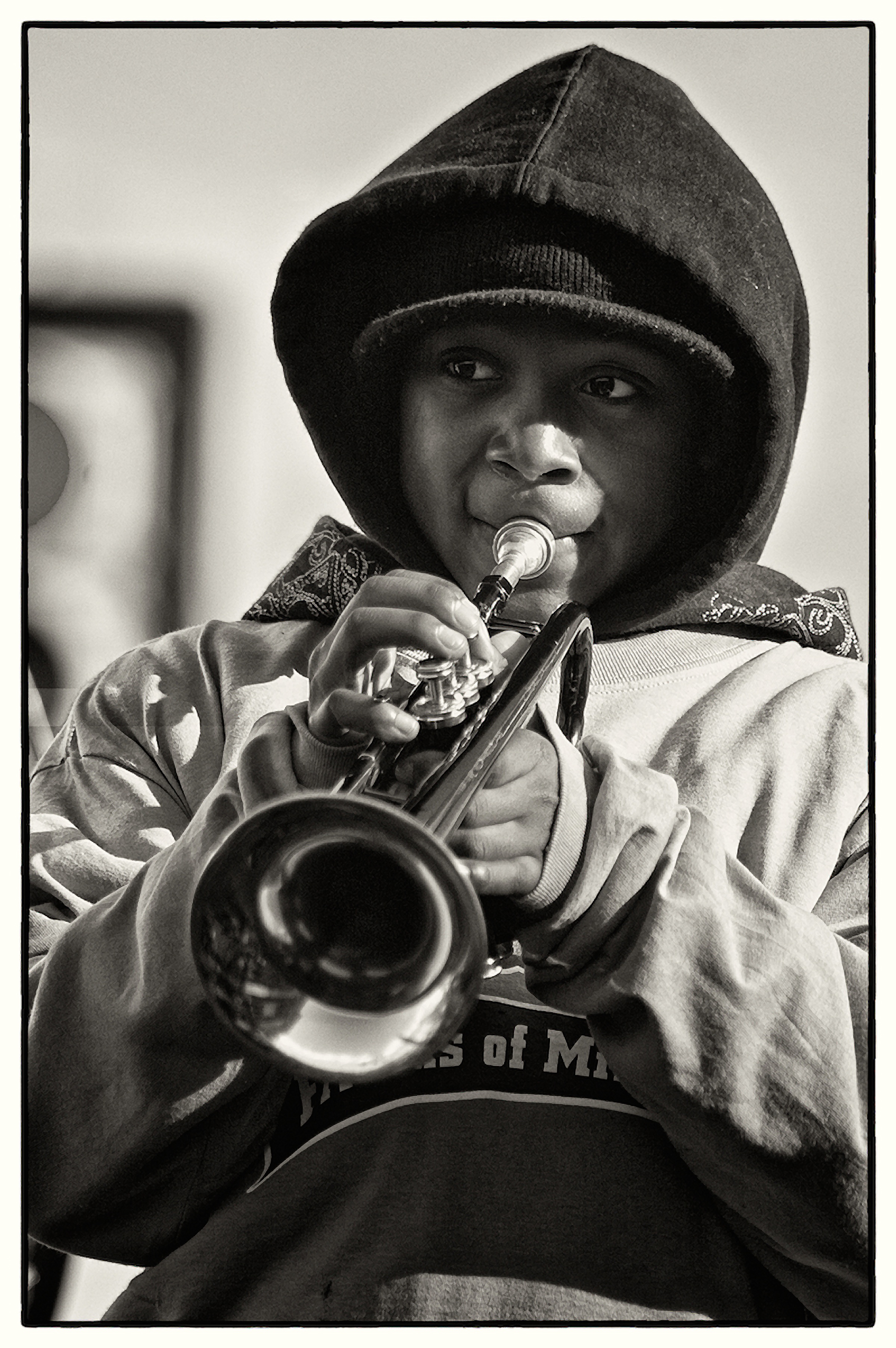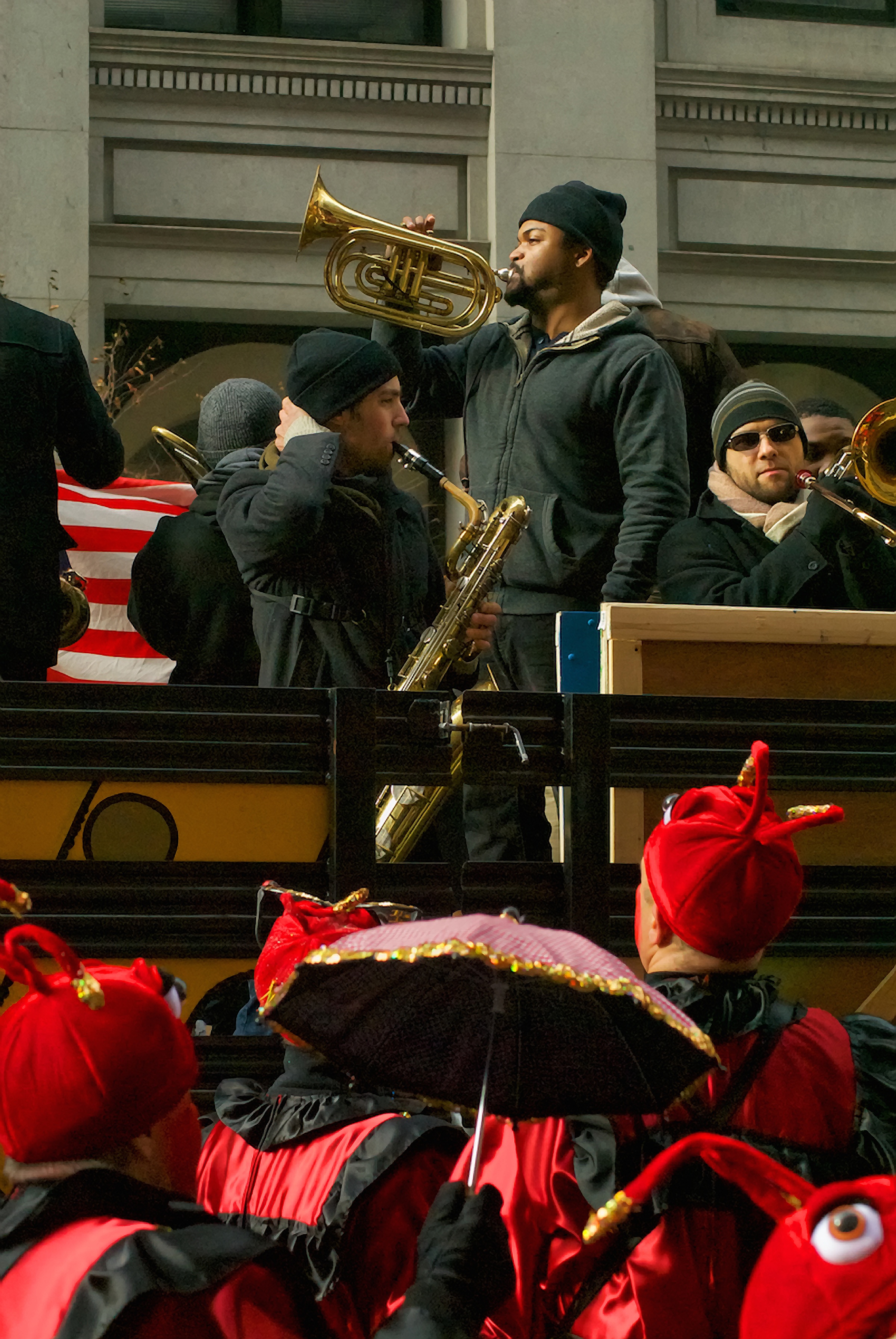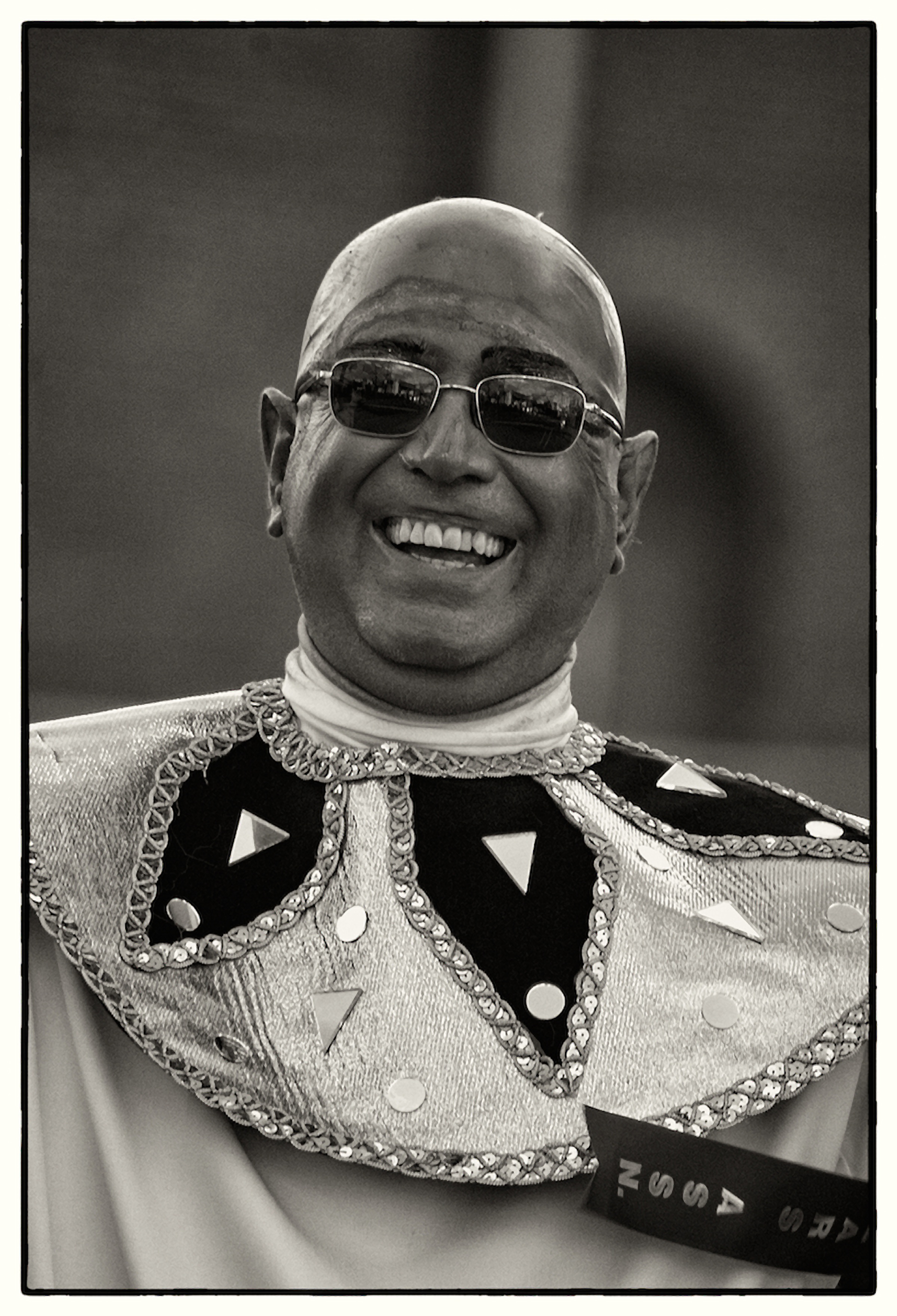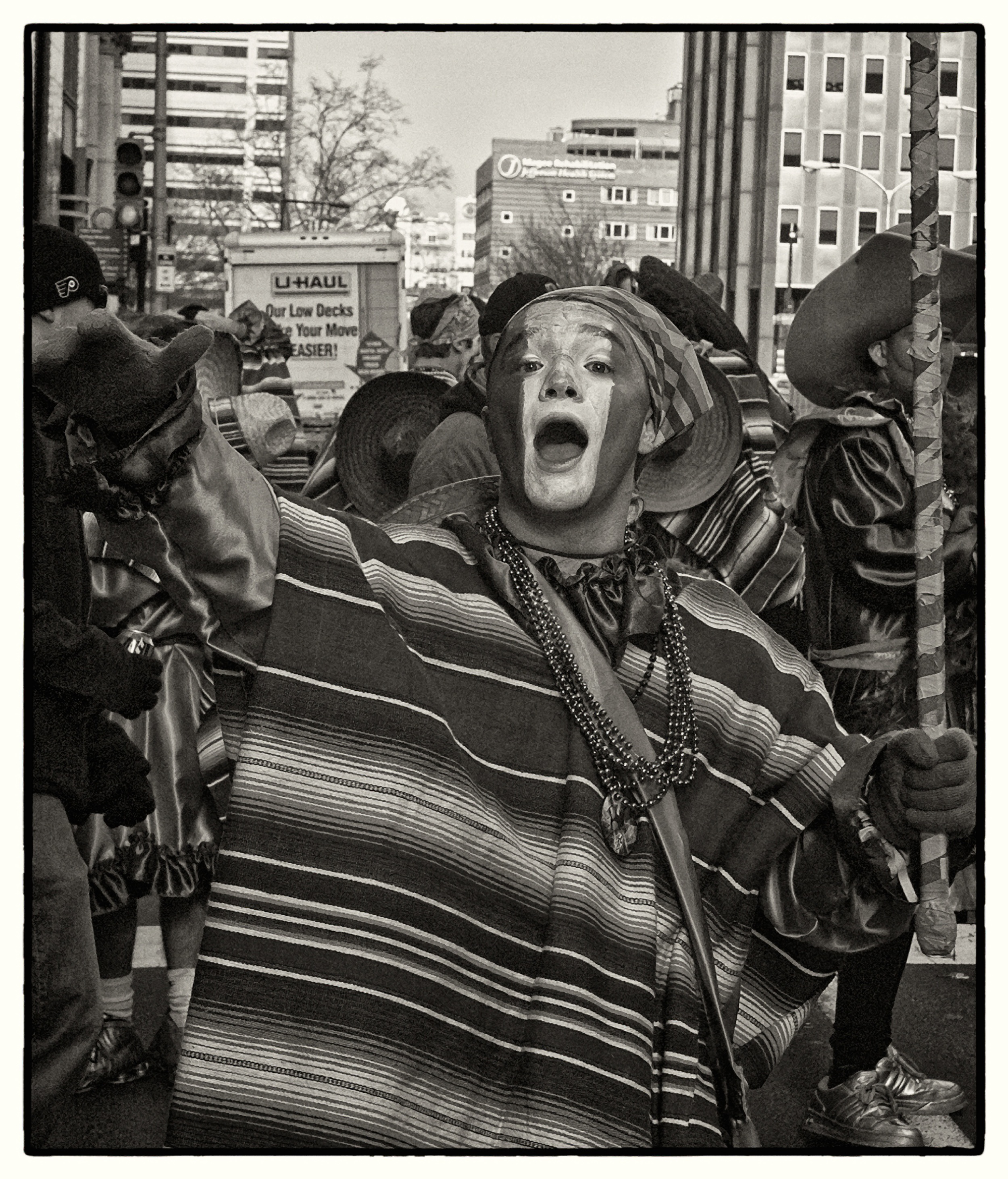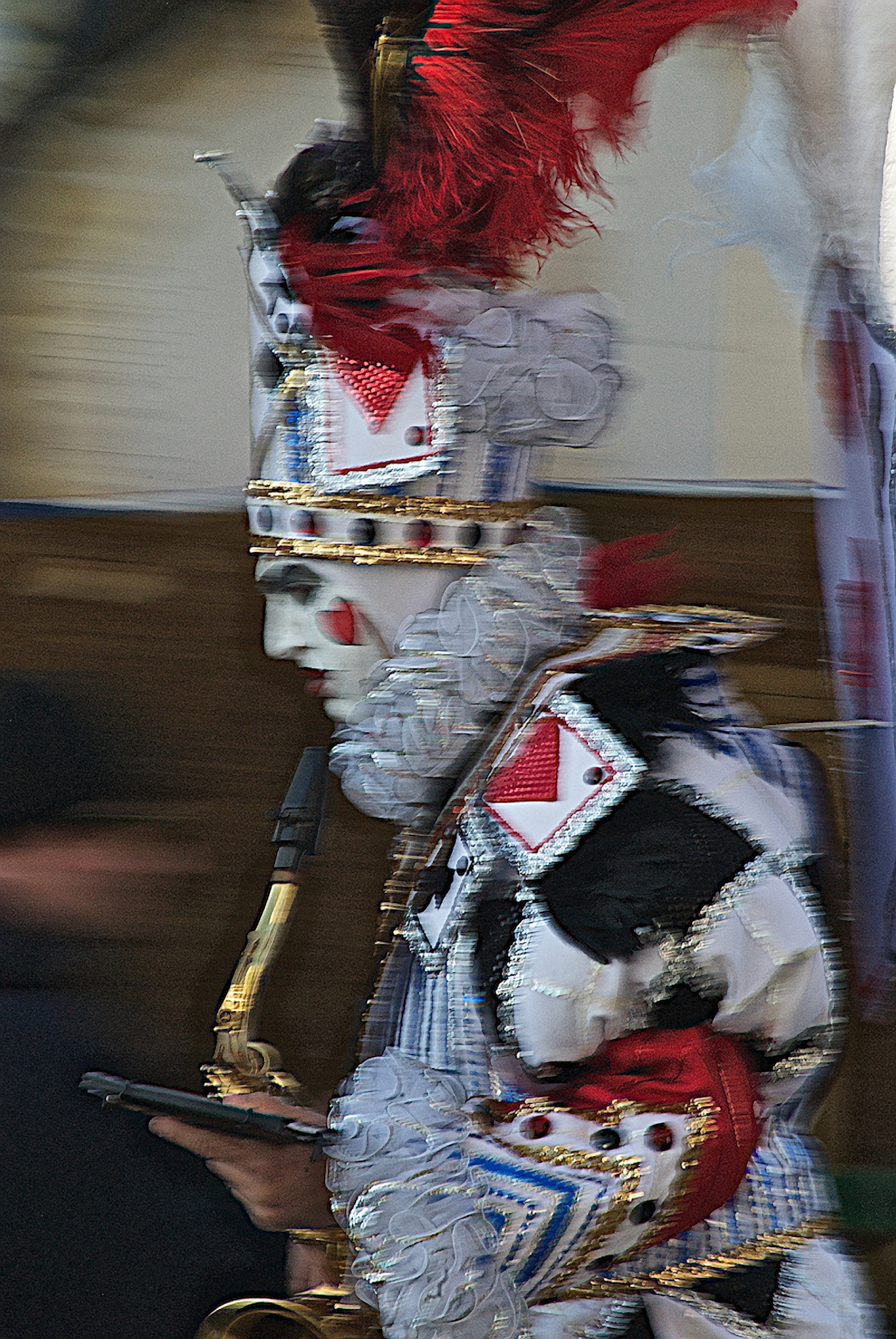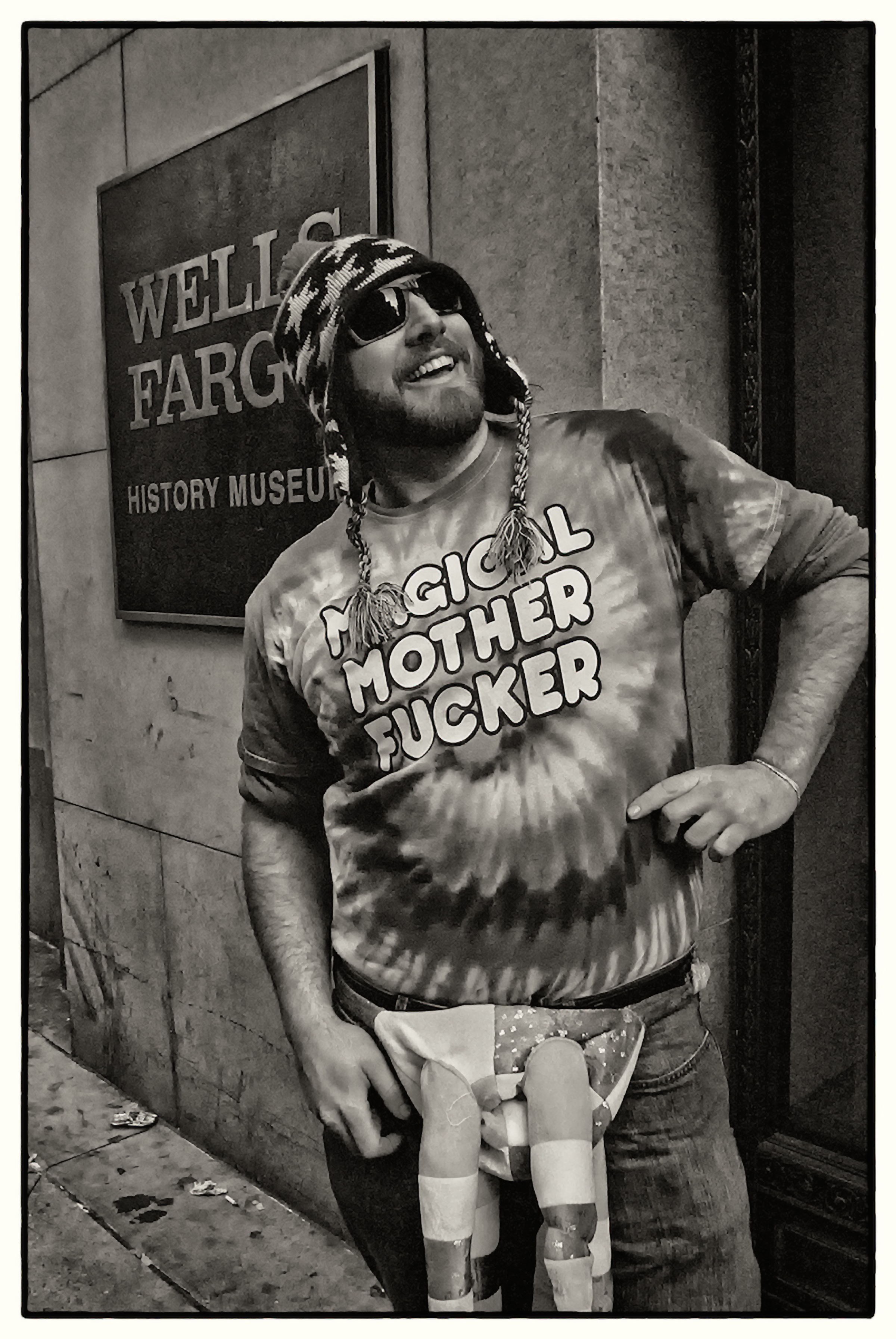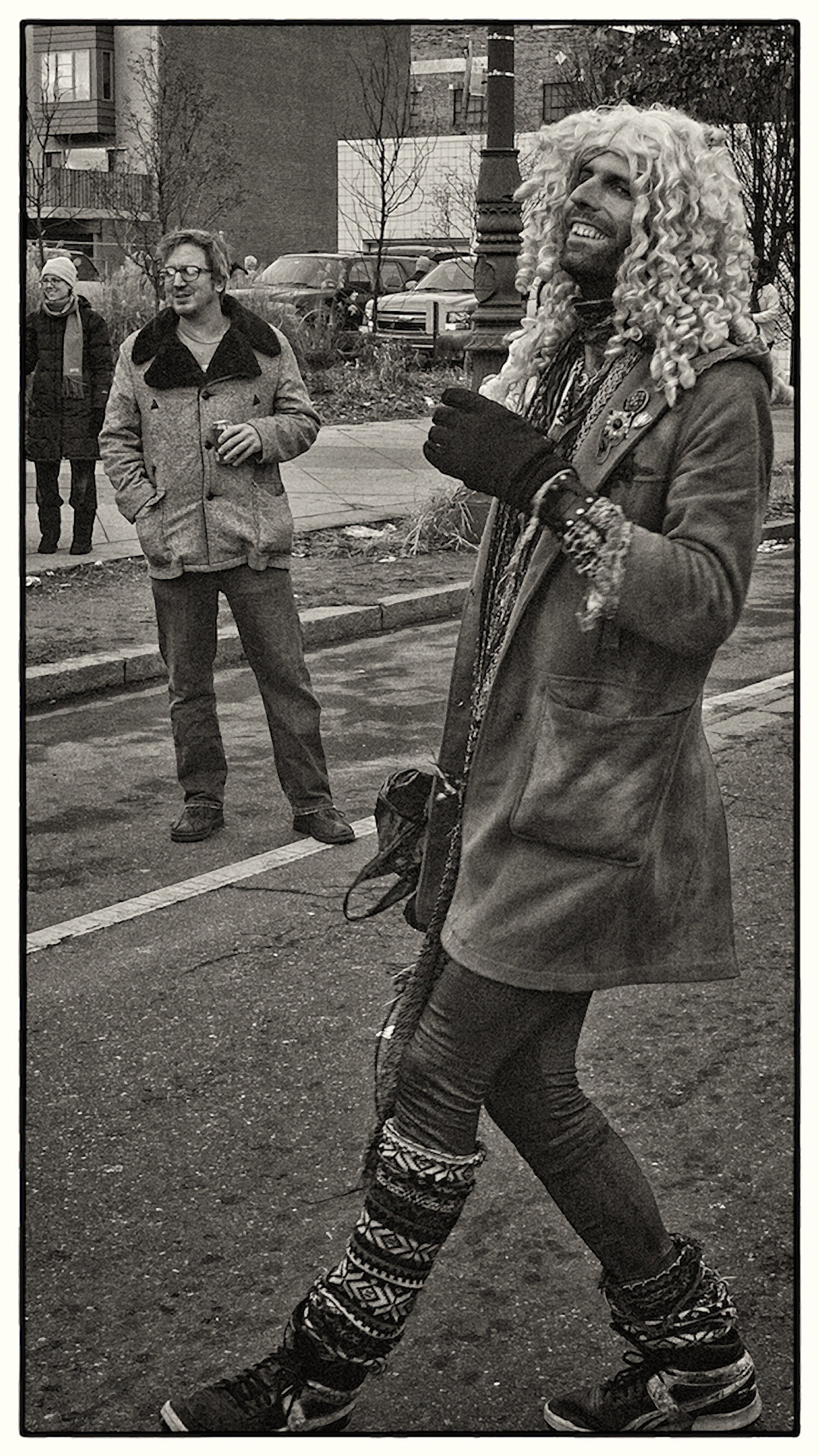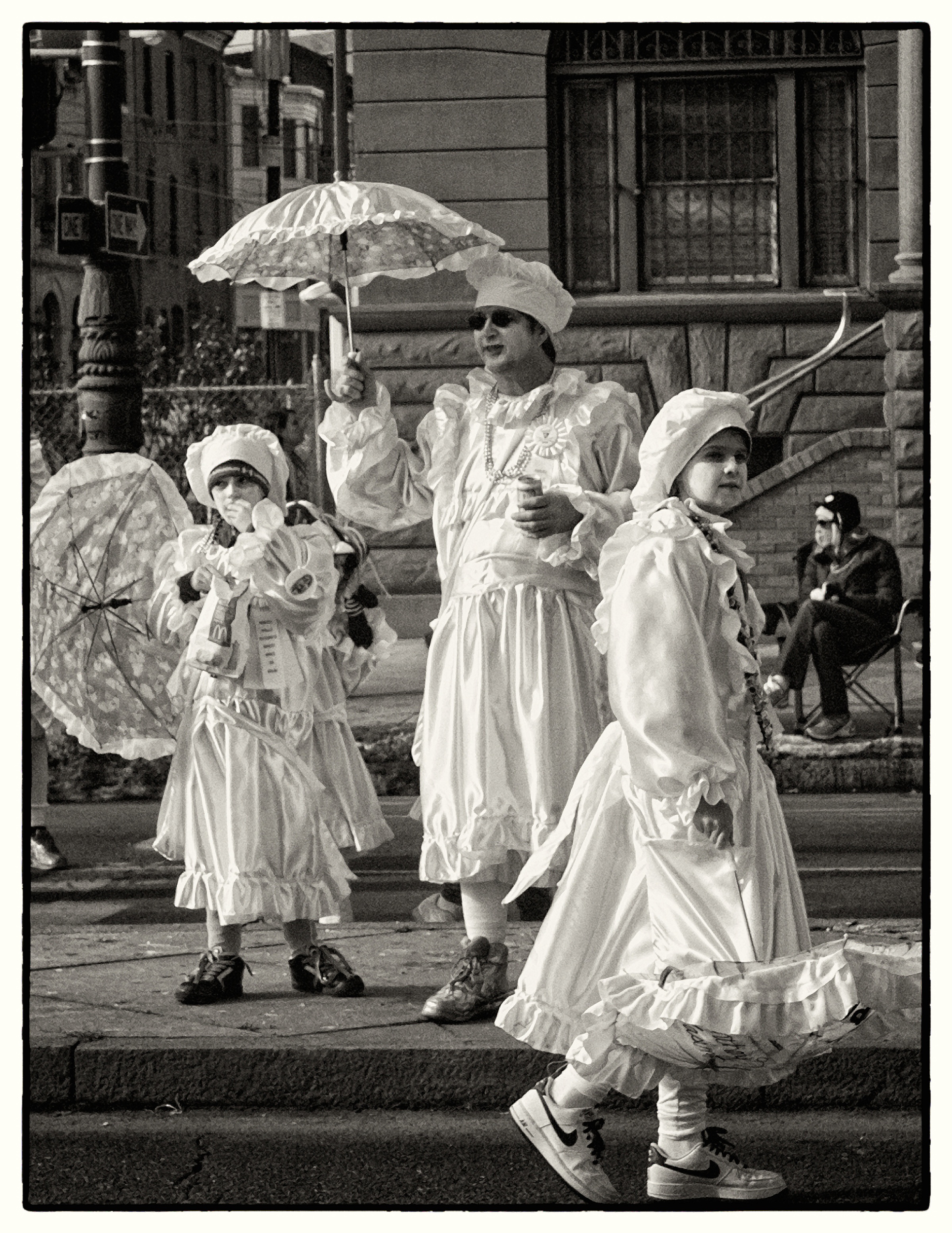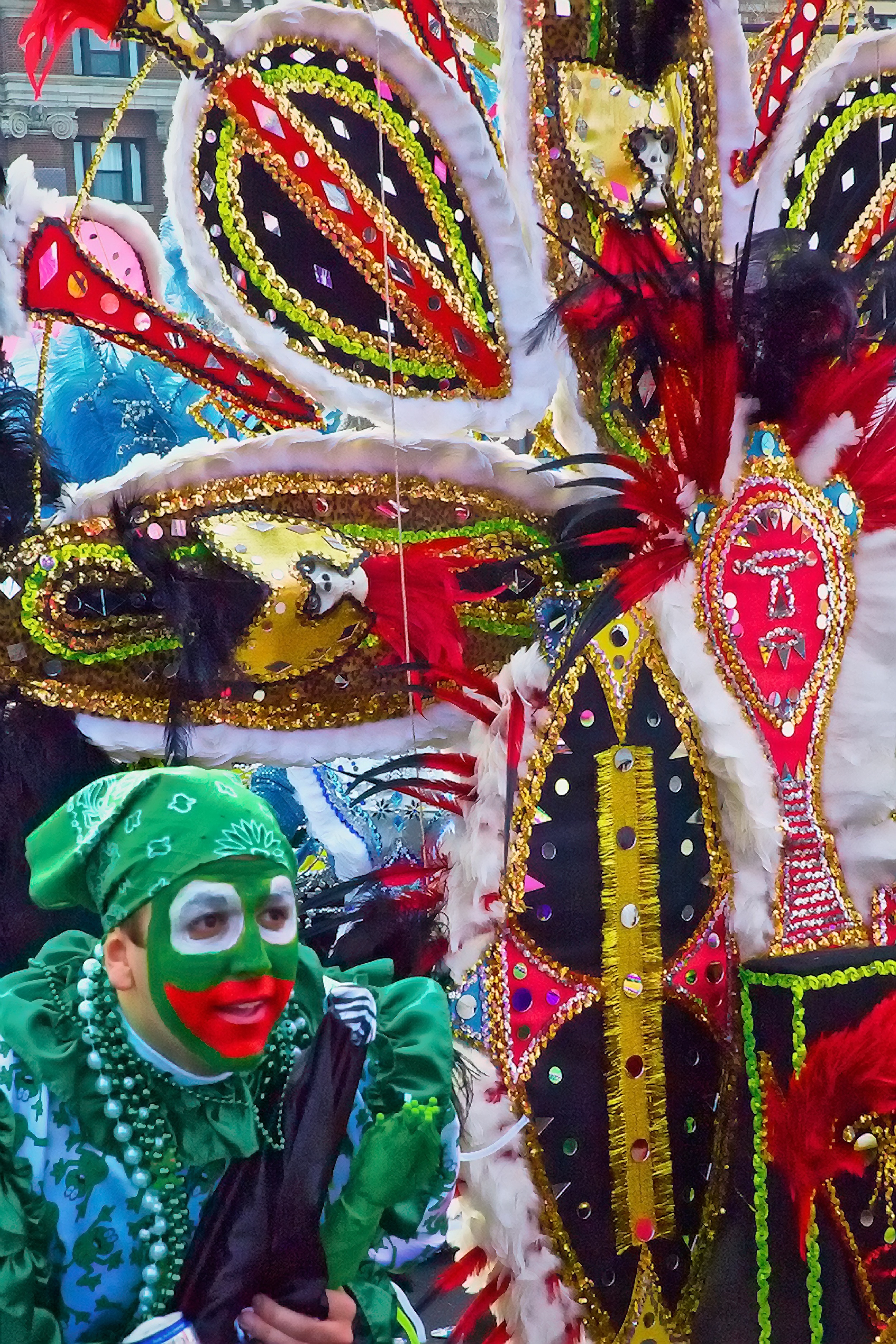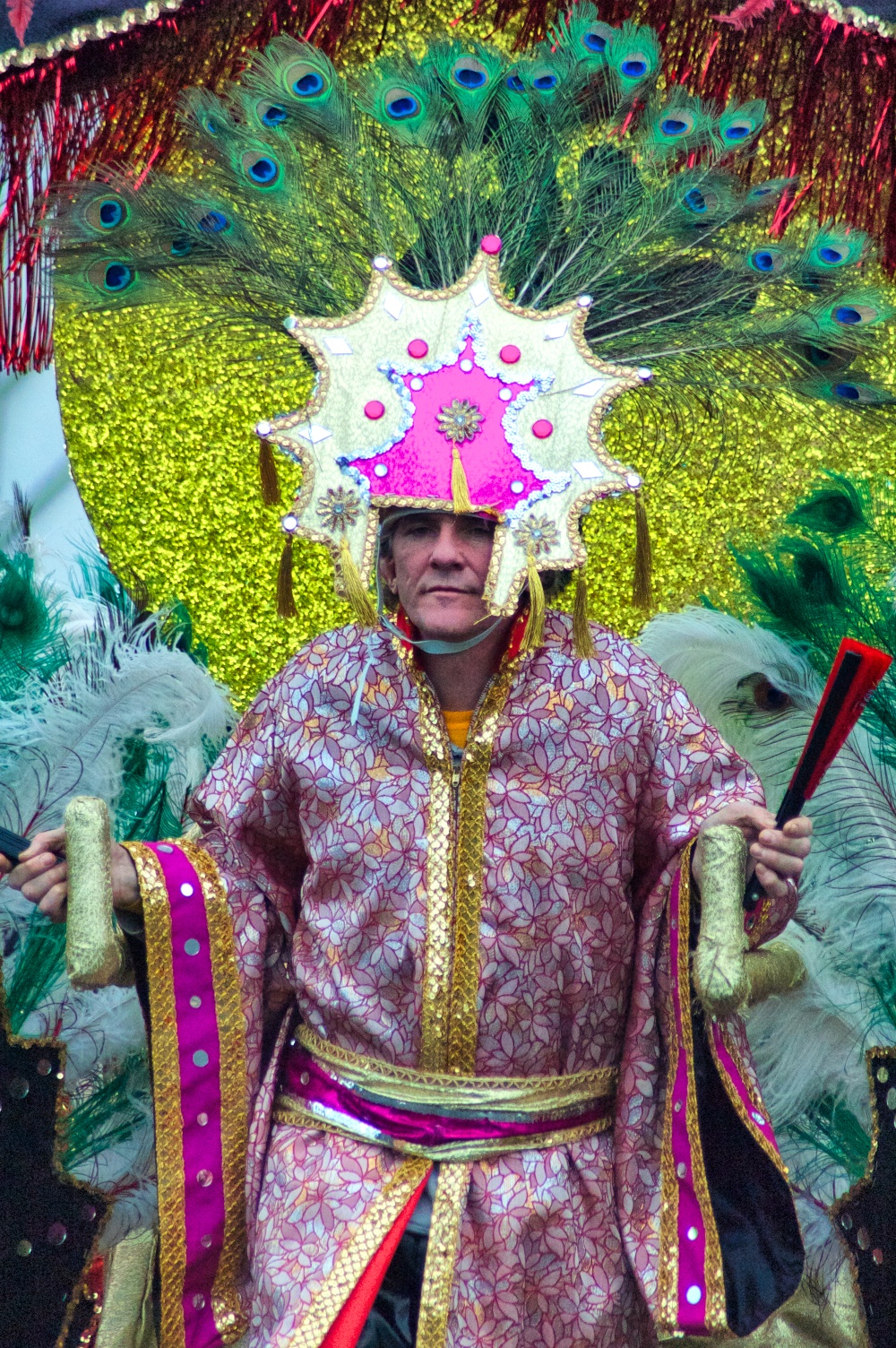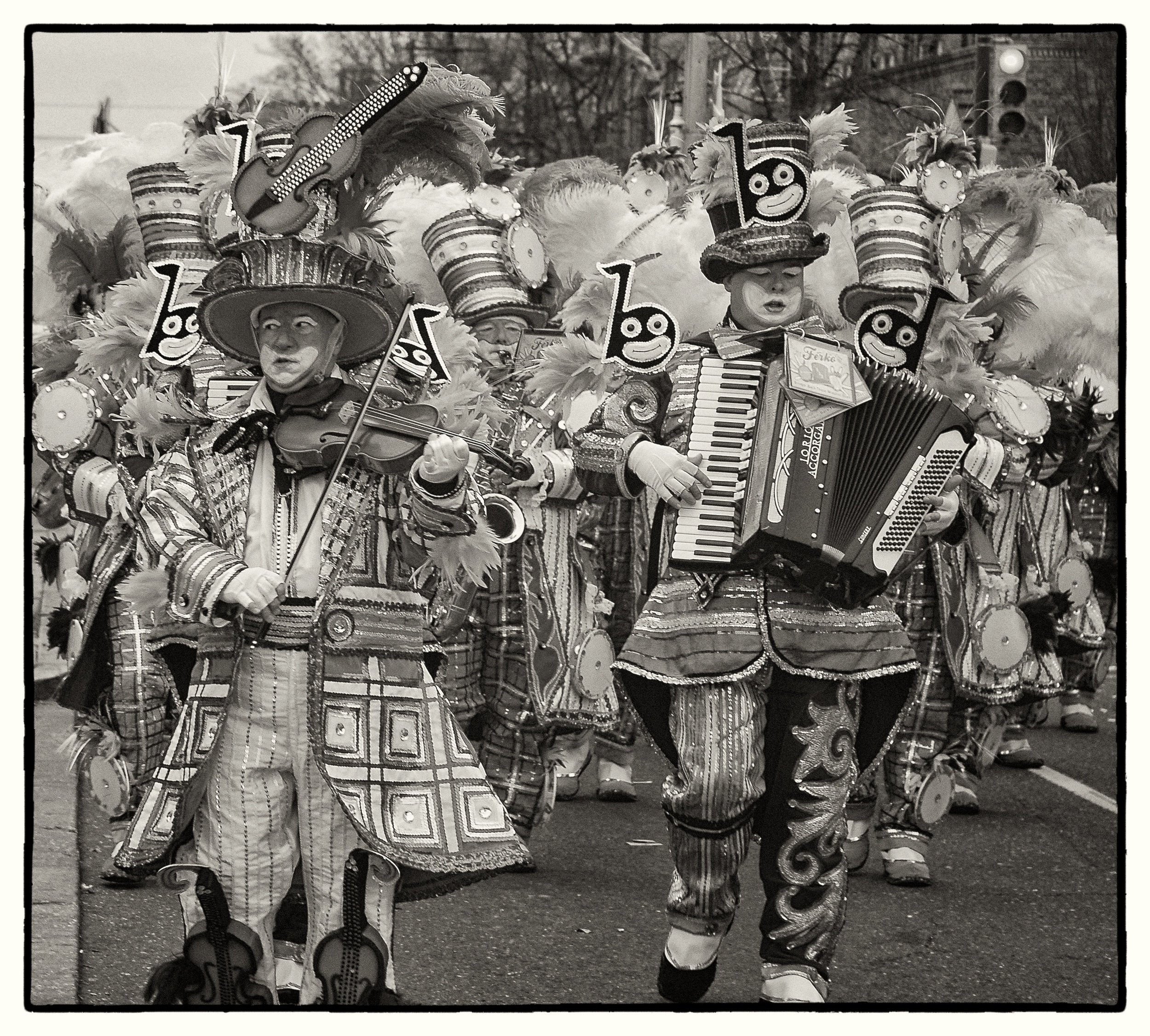It's a cold January on New Year's day morning, in the early 60’s. An African-American father and his young son wait for the 54 bus that takes them to the Broad Street Subway Line. This will transport them to City Hall station located in Center City, Philadelphia, Pennsylvania.
After twenty minutes the father and son finally arrive at the station. As the train roars off to the next stop the sounds of music and the roar of a crowd has replaced the sound of trains. The sounds frighten his young son. His father comforts the boy with a hug and reassuring words of encouragement. The father embraces his son and begins to carrying him up the long stairway to the exit.
Once outside they are immediately engulfed by the music and a mass of humanity.The youngster nervously looks around while holding tight to his father. His gaze is met by smiling faces. Some one says: “Yo is this your son’s first Mummer parade? Happy New Years little man!” The boy looks at his father and smiles, then looks back at the stranger and replies “Happy New Years."
This was my first introduction to the Philadelphia Mummers parade. My father and I could not attend the parade every year. So I would watch the event on our black and white television when we could not attend. When I became old enough to take public transit, I made attendance a personal tradition that led me to explore the Mummers parade photographically.
I began my photographic journey of this Philadelphia tradition in 1979. At the time it was something to do on New Year's Day. As the years and negatives and transparencies started to pile up I started doing research about the origins of the Mummers.
Some of the earliest mummery can be dated back to Egypt, pagan Rome, Greece, England, Germany, and France. The Philadelphia mummery tradition can be traced back to the late 17th century.The first official city sponsored parade was held on January 1, 1901. Over the years the parade and the traditions have slowly and continually evolved. Much of the changes were forced by the social changes within the city and the surrounding communities. Throughout all these changes the parade itself has still maintained its traditions, making it the oldest continuing folk parade in the United States.


